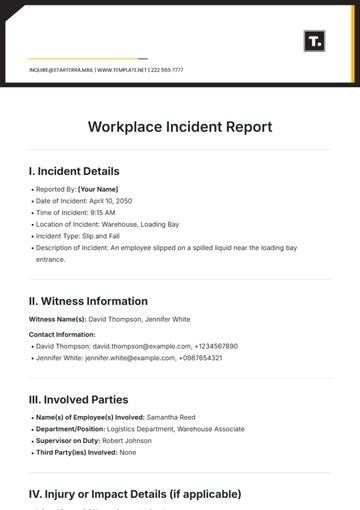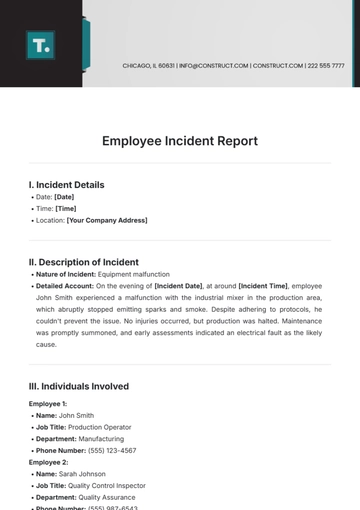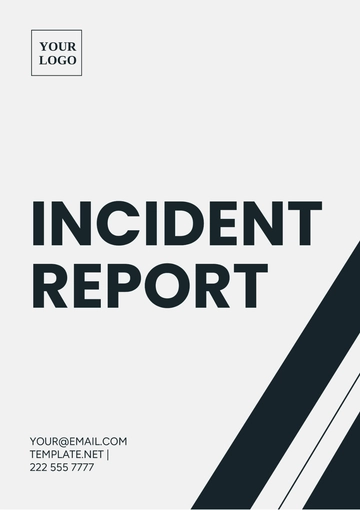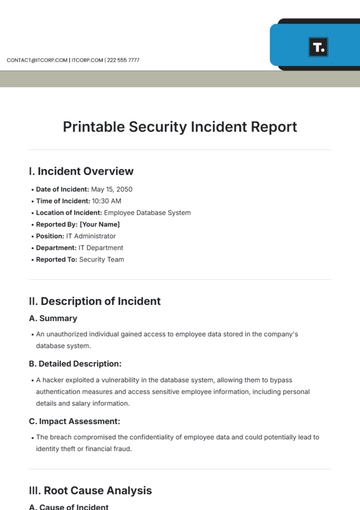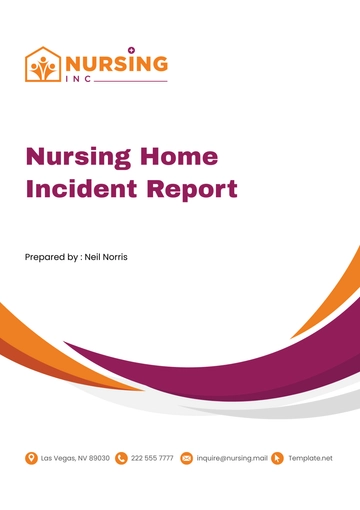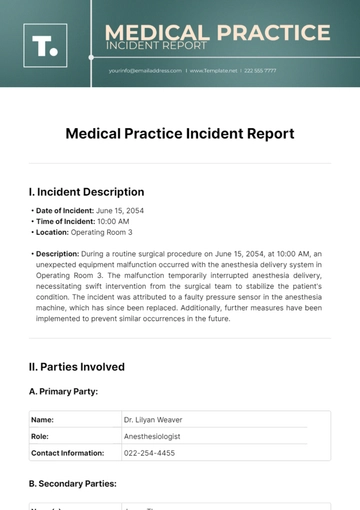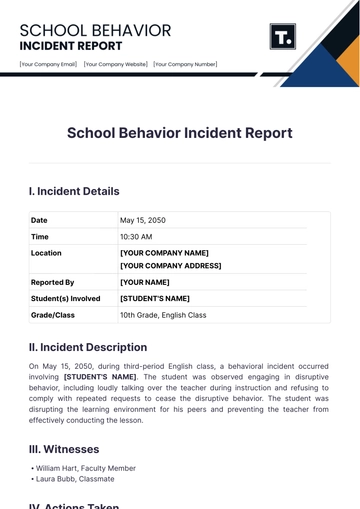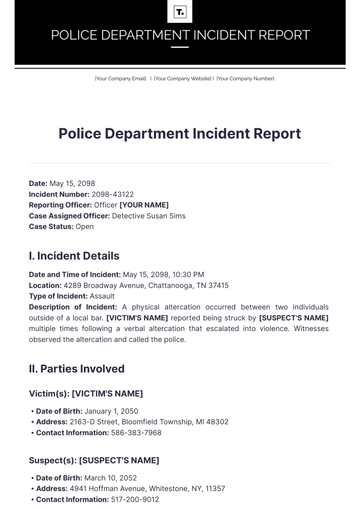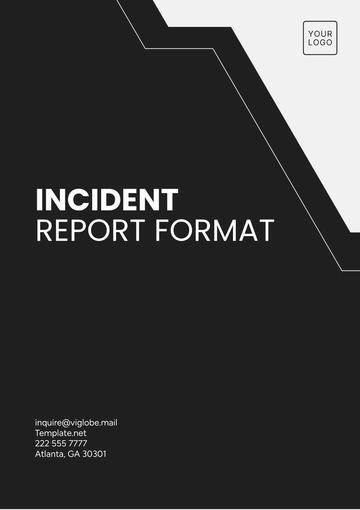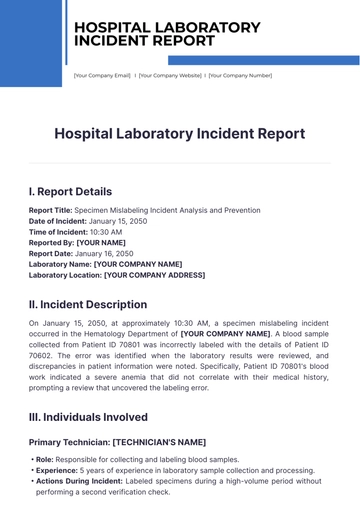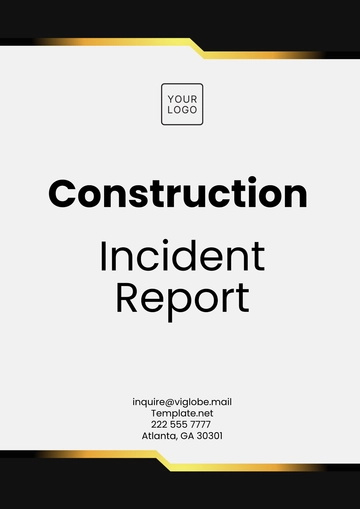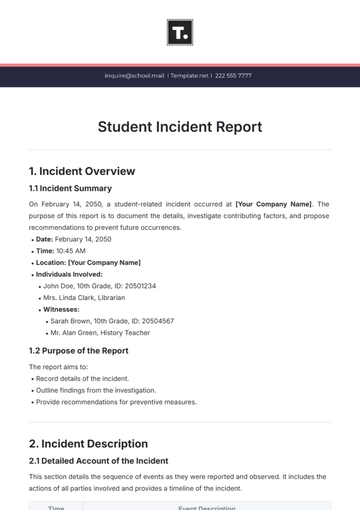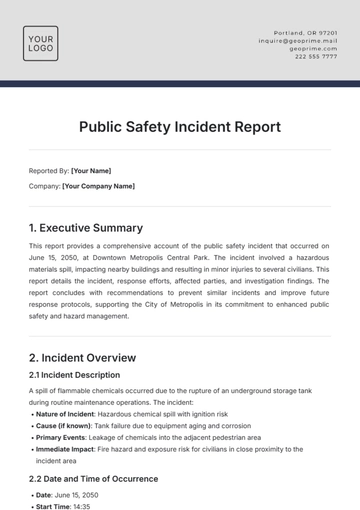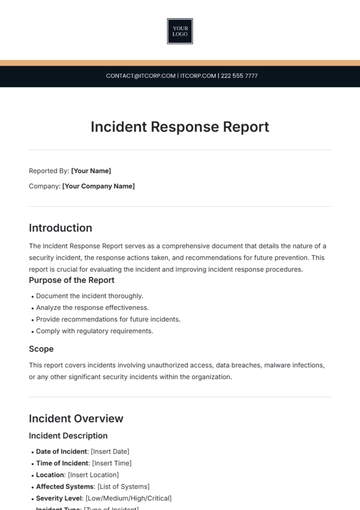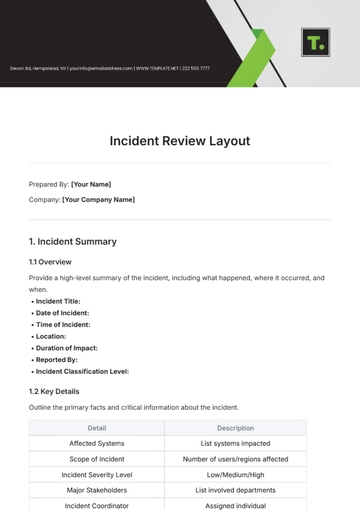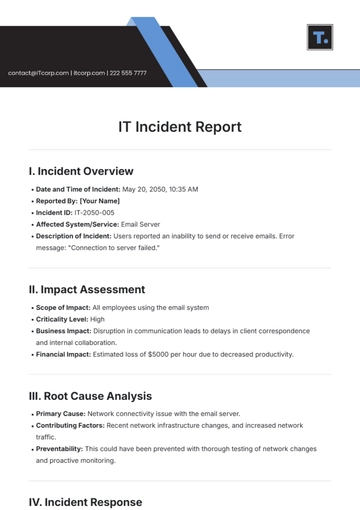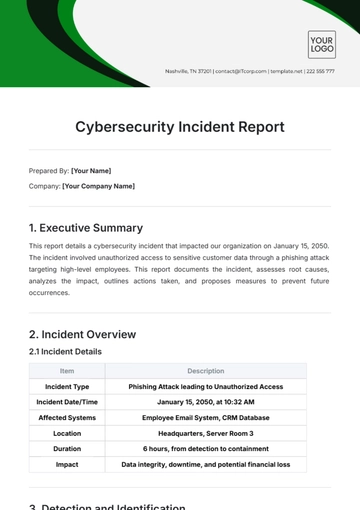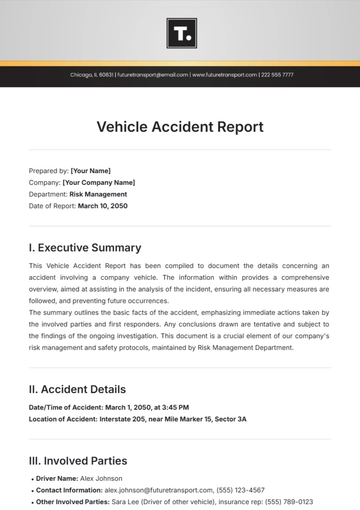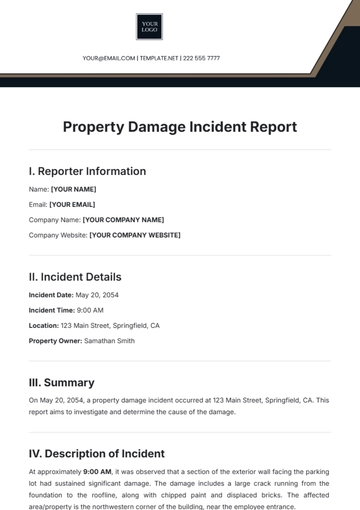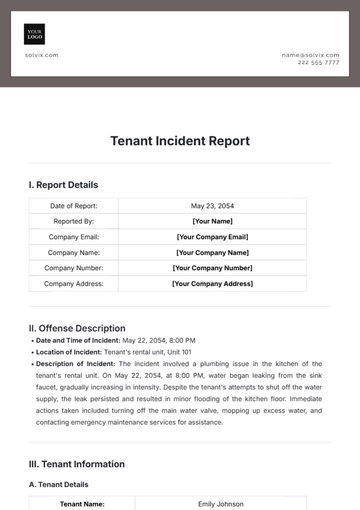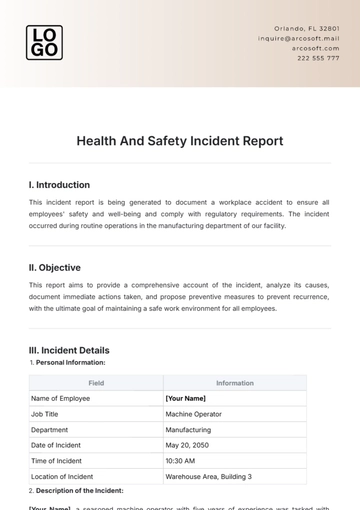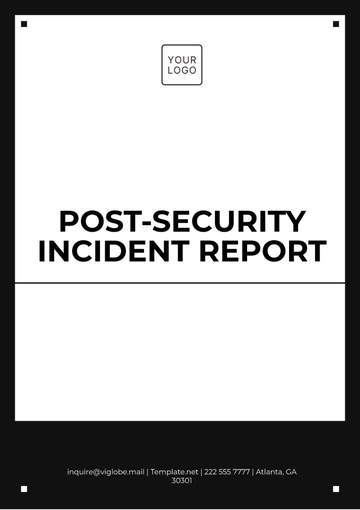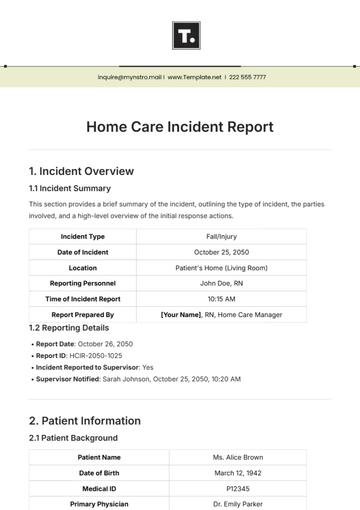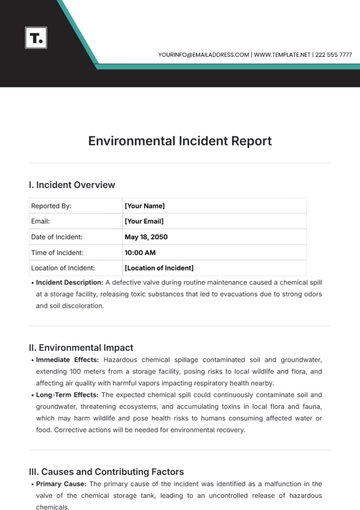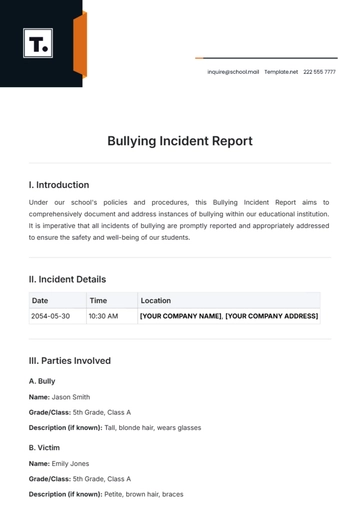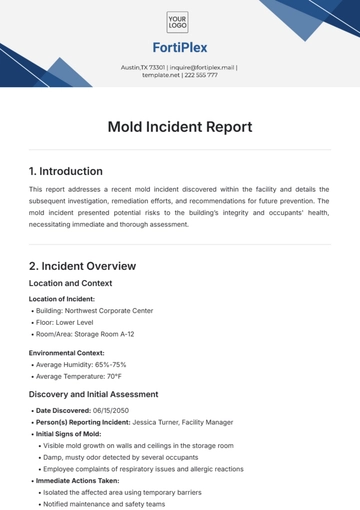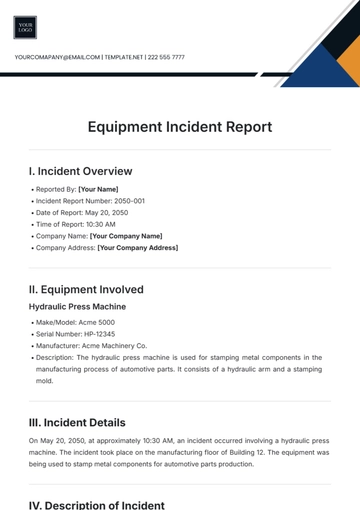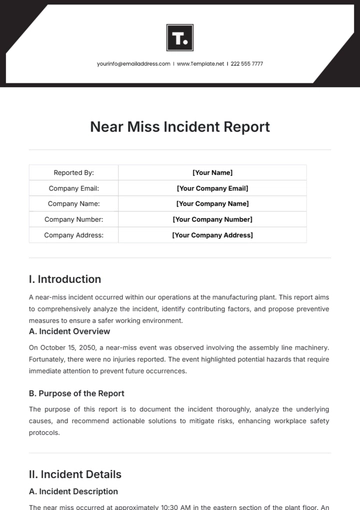Free Food Safety Incident Report
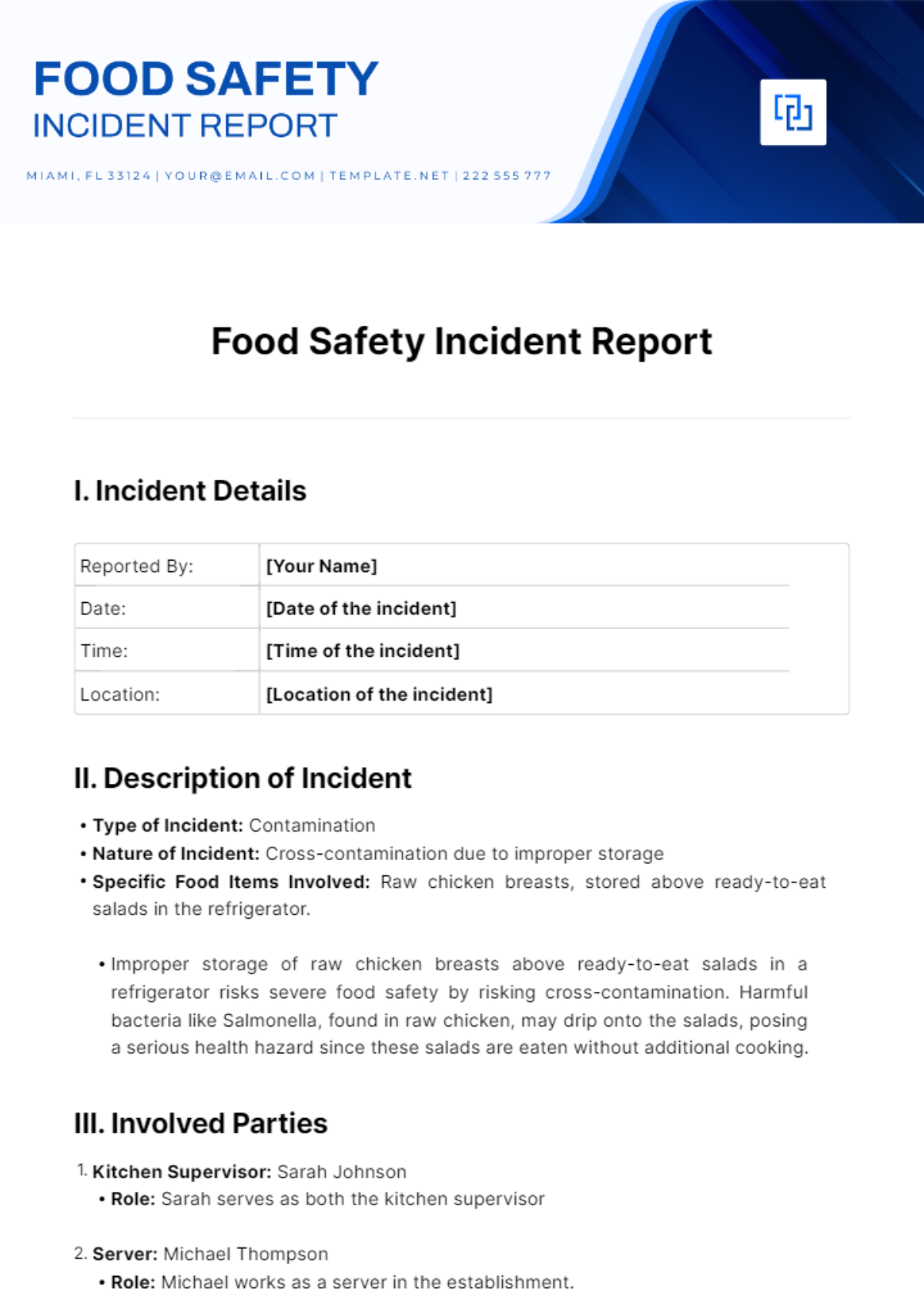
I. Incident Details
Reported By: | [Your Name] |
Date: | [Date of the incident] |
Time: | [Time of the incident] |
Location: | [Location of the incident] |
II. Description of Incident
Type of Incident: Contamination
Nature of Incident: Cross-contamination due to improper storage
Specific Food Items Involved: Raw chicken breasts, stored above ready-to-eat salads in the refrigerator.
Improper storage of raw chicken breasts above ready-to-eat salads in a refrigerator risks severe food safety by risking cross-contamination. Harmful bacteria like Salmonella, found in raw chicken, may drip onto the salads, posing a serious health hazard since these salads are eaten without additional cooking.
III. Involved Parties
Kitchen Supervisor: Sarah Johnson
Role: Sarah serves as both the kitchen supervisor
Server: Michael Thompson
Role: Michael works as a server in the establishment.
IV. Detection and Reporting
Method of Detection: Visual inspection during routine kitchen checks revealed the improper storage of raw chicken. Sarah Johnson, the kitchen supervisor, identified the issue while conducting her regular inspection of food storage areas.
Person(s) who Reported the Incident: Upon discovering that the raw chicken had been improperly stored, the kitchen supervisor, Sarah Johnson quickly took the necessary action to report the incident to the management team.
V. Immediate Actions Taken
A. Removal or Isolation of Affected Food Items
The raw chicken breasts were immediately removed from the shelf above the ready-to-eat salads and placed in a separate container to prevent further cross-contamination.
B. Cleaning and Sanitization Procedures Implemented
The affected area of the refrigerator shelf was thoroughly cleaned and sanitized using food-safe disinfectants approved by the company's food safety protocols.
Every surface nearby was subjected to an extensive cleaning and sanitization procedure to ensure the complete removal of any potential contaminants.
C. Notification of Management or Relevant Personnel
Sarah Johnson, the kitchen supervisor, immediately notified the management team about the incident, providing detailed information regarding the improper storage of food items and the actions taken to address the issue.
VI. Investigation Findings
A. Root Cause Analysis
The root cause of the incident was identified as a lapse in adherence to proper food storage practices. Specifically, failure to store raw chicken separately from ready-to-eat foods led to the risk of cross-contamination.
B. Contributing Factors
It is possible that the improper storage practices that were observed could have been a result of either inadequate training or insufficient oversight concerning the protocols related to food safety.
The presence of a high workload or significant time constraints within the kitchen environment might have resulted in the adoption of shortcuts in the procedures for handling food.
C. Any Deficiencies in Food Safety Protocols Identified
The investigation revealed a deficiency in the company's food storage procedures, highlighting the need for reinforced training and monitoring to ensure compliance with food safety regulations.
Recommendations were made to review and update existing protocols to emphasize the importance of proper food storage and handling practices to prevent similar incidents in the future.
VII. Corrective Actions
Updated Procedures or Protocols: Revised food storage procedures have been implemented to clearly outline the proper handling and storage of raw and ready-to-eat foods, emphasizing the importance of preventing cross-contamination.
Additional Training for Staff: All kitchen staff members, including servers like Michael Thompson, have undergone refresher training sessions focused on food safety practices, with specific emphasis on proper food storage and handling techniques.
Equipment Maintenance or Replacement: Scheduled maintenance checks for refrigeration units will ensure proper function and temperature control to inhibit bacterial growth, with any identified faulty equipment being quickly repaired or replaced to uphold food safety standards.
VIII. Additional Notes
Despite the immediate actions taken to mitigate the incident, it is crucial to remain vigilant and continue monitoring food storage practices to prevent similar occurrences in the future.
Regular audits and spot checks will be conducted to ensure ongoing compliance with updated food safety procedures.
Encourage open communication among staff members to report any potential food safety concerns promptly.
Management will remain proactive in addressing any identified deficiencies in food safety protocols to uphold the highest standards of food safety and customer satisfaction.
- 100% Customizable, free editor
- Access 1 Million+ Templates, photo’s & graphics
- Download or share as a template
- Click and replace photos, graphics, text, backgrounds
- Resize, crop, AI write & more
- Access advanced editor
Maintain high standards of food safety with the Food Safety Incident Report Template from Template.net. This customizable and editable template allows you to detail every aspect of food safety incidents. Editable in our Ai Editor Tool, it ensures accurate and efficient reporting, helping you address and prevent future issues. Perfect for any food service operation
You may also like
- Sales Report
- Daily Report
- Project Report
- Business Report
- Weekly Report
- Incident Report
- Annual Report
- Report Layout
- Report Design
- Progress Report
- Marketing Report
- Company Report
- Monthly Report
- Audit Report
- Status Report
- School Report
- Reports Hr
- Management Report
- Project Status Report
- Handover Report
- Health And Safety Report
- Restaurant Report
- Construction Report
- Research Report
- Evaluation Report
- Investigation Report
- Employee Report
- Advertising Report
- Weekly Status Report
- Project Management Report
- Finance Report
- Service Report
- Technical Report
- Meeting Report
- Quarterly Report
- Inspection Report
- Medical Report
- Test Report
- Summary Report
- Inventory Report
- Valuation Report
- Operations Report
- Payroll Report
- Training Report
- Job Report
- Case Report
- Performance Report
- Board Report
- Internal Audit Report
- Student Report
- Monthly Management Report
- Small Business Report
- Accident Report
- Call Center Report
- Activity Report
- IT and Software Report
- Internship Report
- Visit Report
- Product Report
- Book Report
- Property Report
- Recruitment Report
- University Report
- Event Report
- SEO Report
- Conference Report
- Narrative Report
- Nursing Home Report
- Preschool Report
- Call Report
- Customer Report
- Employee Incident Report
- Accomplishment Report
- Social Media Report
- Work From Home Report
- Security Report
- Damage Report
- Quality Report
- Internal Report
- Nurse Report
- Real Estate Report
- Hotel Report
- Equipment Report
- Credit Report
- Field Report
- Non Profit Report
- Maintenance Report
- News Report
- Survey Report
- Executive Report
- Law Firm Report
- Advertising Agency Report
- Interior Design Report
- Travel Agency Report
- Stock Report
- Salon Report
- Bug Report
- Workplace Report
- Action Report
- Investor Report
- Cleaning Services Report
- Consulting Report
- Freelancer Report
- Site Visit Report
- Trip Report
- Classroom Observation Report
- Vehicle Report
- Final Report
- Software Report
